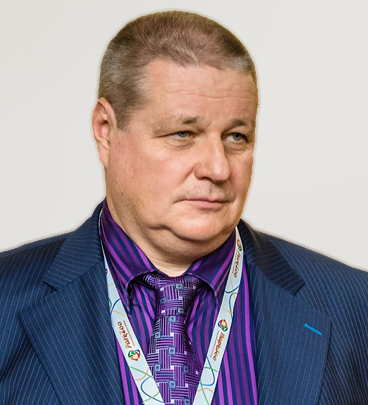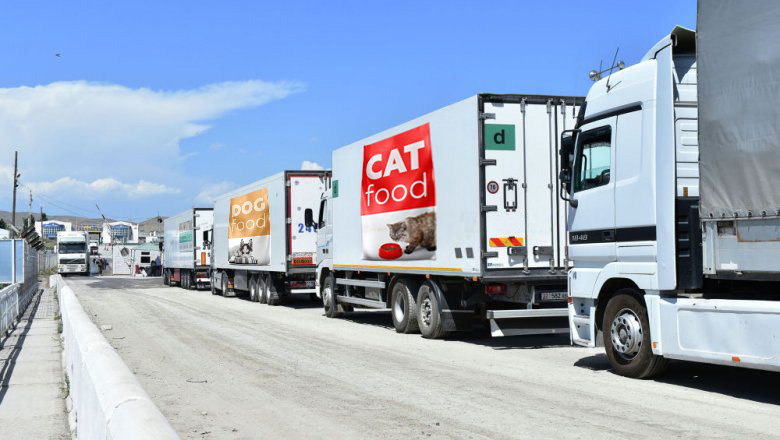Interview by Yulia Dolzhenkova
 According to researches and insider information the Russian pet market is far from being mature and its potential today is $5–6 bln. Alongside with domestic production development import of premium pet products is expanding. There is a great interest to launch new products and permanent requests from international suppliers how to do that.
According to researches and insider information the Russian pet market is far from being mature and its potential today is $5–6 bln. Alongside with domestic production development import of premium pet products is expanding. There is a great interest to launch new products and permanent requests from international suppliers how to do that.
Kirill Dmitriev, a presidium member of the Non-commercial partnership organization OPORA Russia, a member of the public council of the Rosselkhoznadzor and the leader of the new pet industry association, which is about to be established, answers questions on regulatory issues the newcomers should be aware of.
– Kirill, what are the most important and relevant things to know for international suppliers who steer their way to the Russian pet market?
– The main and the most important thing they should be aware of is that regulatory rules on import and supplies in Russia are different from those in other countries, i.e. EU or the USA.
And it makes sense to study and be familiar with them not to face unexpected and unfavorable surprises. No doubt, international manufacturer can rely on professional distributor in Russia who is responsible for fixing the regulatory issues and knows how to do it, but the suppliers still have to do a lot of preliminary paperwork themselves. And it always helps to keep your finger on the pulse. Your awareness is a great support to the distributor as well – it is always more efficient and valuable to work in a team rather than dumping all the work on the partner.
– And what are the obvious differences with other countries?
– For example, in Russia the rules for trading pet food and veterinary drugs vary from each other and are completely different. Second, GMOs in pet products are not allowed at all. In addition, the requirements for raw materials and ingredients for differ for many countries, as far as to the products for Russia must be produced on a special clean line and stored in a separate place in a warehouse.
– Well, Kirill, what do you think are the first step of the supplier? How can he or she legally enter the market with pet products?
– Pet food in Russia was classified as veterinary drugs and required mandatory registration 15 years ago. It was an expensive and complex procedure, then followed certification and declaration. Our Pet Business Union worked and achieved that food and treats are no longer veterinary products and are not the subject of any registration. We managed to overcome bureaucratic barriers and it was very good for the entire industry and the economic performance of the industry. At that time a large number of brands entered the Russian pet market.

Nowadays, the only obligatory regulation to start supplying products to Russia, is that the name of a pet food, treat or supplement manufacturer must be included in the Register of Companies whose products are allowed to be distributed in Russia. This Register is maintained by the Rosselkhoznadzor (RSN), the Federal Service for Veterinary and Phytosanitary Supervision.
– How the manufacturer can get in there?
– To get into it, manufacturers should apply to the State Service of their own country with a request to include the plant number in the Register of manufacturers allowed to trade in the Russian Federation. This process takes from 2 months up to a year.
In fact, this list is nothing else than the indication that the RSN shifts the responsibility for a product quality to the country where the plant is located. But the Veterinary Service of that country still issues a veterinary certificate for the products of any enterprise in there. And thus it is responsible for the compliance of the product with the standards.
As you can see, the Register is a kind of excessive measure, because the RSN still monitors, selects samples, and tests products. And the Register is nothing but a bureaucratic element. Nevertheless, it exists and manufacturers need to start with it.
And I do not want to frighten anyone, but it does not guarantee anything – all those companies from the Netherlands, the United States, and Spain that fell under the recent ban are included in the Register, however, their deliveries to Russia are now suspended.
An additional procedure (after entering into the Register) is required for feed additives and treats.
– And that is the beginning of the second round, isn’t it?
– Russian authorities still equate treats with feed additives, and they are currently subject to registration. This procedure is complicated: the supplier needs to collect a huge number of documents and submit them to the RSN. And then everything depends on the desire of officials to allow a product to the market.
– Why do food supplements require a special registration?
– This has developed historically. Feed additives are used as components in agricultural (farm) animals food. They are certain mixtures and there can contain a huge variety of these premixes. They all are made of different ingredients, therefore, all of them must be registered.
In the pet industry the situation is different – food supplements for dogs and cats have a standard recipe and each manufacturer adheres to it. Each item has a certain formula and it is always the same.
We are struggling with this problem and trying to convince the RSN to recognize that the mixtures for farm animals and pet food supplements are two different categories. The first are used in food production, and they should be considered and registered in a different way. The second are standard supplements for pets: minerals, vitamins, etc. Such supplements are now classified as veterinary drugs, substances that are introduced into the diet to achieve certain goals: treatment, disorder prevention, etc.
– It looks like a very complex process that does not really make sense, because the products for pets are not a part of the further product chain, unlike agricultural products. Are there any chances to solve this problem?
– That’s what pet industry associations are doing right now. We established and are working on the Technical Regulations on the safety of pet food and supplements in the Eurasian Economic Community. Our priority is to separate products for pets and for agricultural animals on the official level, divide ‘animal’ category into two separate segments. Then the regulations for pet products will be adopted faster than in the agricultural sector.
– The whole pet business community is looking forward to these changes and to the barriers to fall down. That will enable to unify and simplify control and the whole system. Let’s assume we are there, the pet food plant is included in the register, all the papers were received and the products are allowed to be imported to Russia. What awaits the supplier next? Are there any more pitfalls, or is the further way simple?
– If the supplier has not yet found a reliable distributor to represent its products throughout Russia it’s just the time to look for one. Let me remind the audience, that Russia consists of 7 federal districts, it has 10 time zones and it is 4.000 km long from north to south and 10.000 km long from west to east. It is better find a partner who will cover the whole country.
When a distributor is found, the supplier will face harsh everyday life and other rules to follow. Pet food trading on the territory of the Russian Federation is also quite a complex bureaucratic system. It is tracked by the Mercury electronic veterinary certification system, which traces the entire process from the purchase through customs to the moment of arrival to the consumer. There are certain rules that must be followed, for example, to provide the number of each new batch, even if it is the same product, but produced on different dates. And there are many other details. Mercury system is costly for trading companies. And suppliers should be prepared expenses with their distributors.
– Basically, you mean that international companies need to put time and effort to get familiar with the market they are entering, and be aware of the rules at least at on the basic level. The other priority is to find a trustful and reliable partner in Russia. And to be open to adapt to new conditions different from those suppliers are used to.
– That’s right. Getting started and grow in Russia is a certain challenge and it is always helpful to be prepared. Otherwise, the Russian pet market is interesting, developing and promising. It is in a way exciting to work here – you will certainly not be bored.
For further details please contact Yulia Dolzhenkova on: [email protected]
To continue reading please .